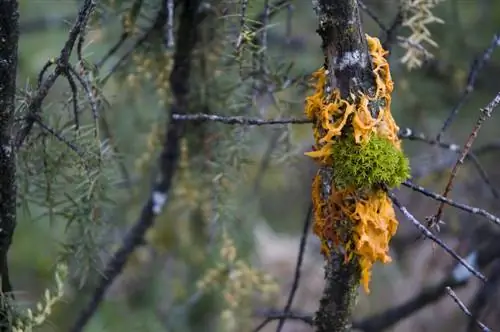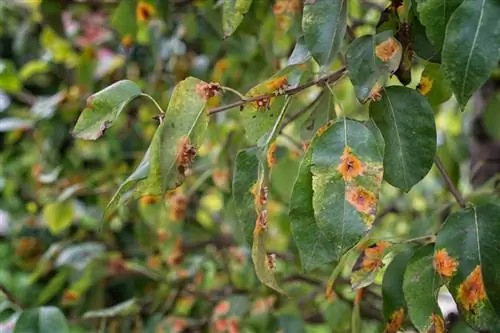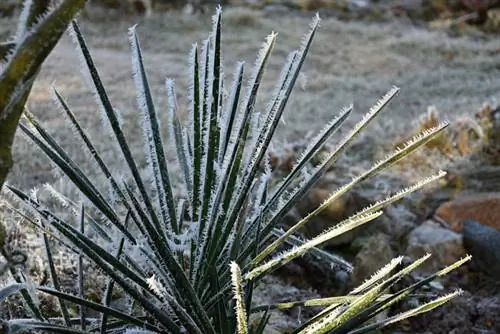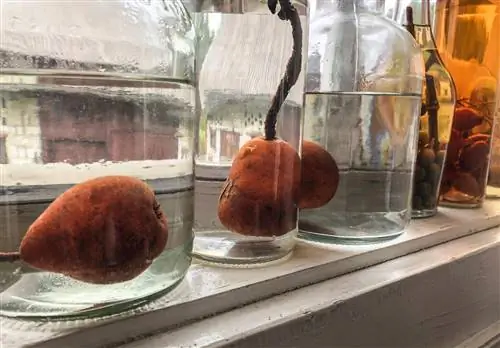- Author admin [email protected].
- Public 2023-12-16 16:46.
- Last modified 2025-01-23 11:21.
Like the Chinese juniper, the Sade tree (Juniperus sabina) is also affected by pear rust. The fungal spores infect the leaves of pear trees. The fruit trees are attacked in summer. The fungus survives the winter in the wood of juniper bushes.
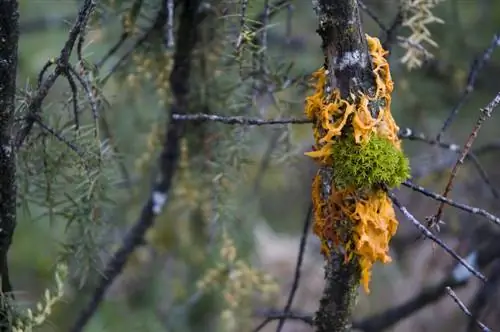
How is the Sade tree protected from pear rust?
The Sade tree (Juniperus sabina) can be attacked by pear rust, a rust fungus called Gymnosporangium sabinae. To combat it, you can cut back infected branches and use fungicides. To keep the Sade tree he althy, use plant strengtheners such as nettle decoction, horsetail extract or organic-mineral PK fertilizer.
Lifecycle
There is a rust fungus with the scientific name Gymnosporangium sabinae hidden behind the pear grate. This fungus goes through two phases of development on different trees. The Sade tree is one of the main hosts in whose wood the fungus spreads and lives for many years.
Every spring it develops orange fruit bodies that shrink in dry conditions and swell in wet weather conditions. These spore beds develop spores that spread more than 500 meters with the wind. They infect the leaves of wild and cultivated pears.
Fight
Since 2010 there has been a fungicide that is used specifically against pear rust. However, the remedy is intended to combat the fungal disease on pear trees. If used immediately after the first symptoms, the universal fungus-free agent stops the spores from spreading further. The active ingredient has a depot effect, so that the effect lasts even after injection.
Prevention
Check juniper bushes regularly for clubbed thickenings that appear between March and April. The affected branches should be cut far back into the he althy wood. However, it is not certain that the fungus has been completely removed. Its mycelium often extends far into the wood without you noticing. Severely infested bushes should be completely removed to stop further spread.
If you have pear trees in your garden, you should pick off and dispose of infected leaves. Dead shoots are removed regularly. To promote the vitality of the trees, you can regularly spray plant strengtheners.
This strengthens Sadebaum and Pear:
- Stinging nettle broth
- Horsetail extract
- organic-mineral PK fertilizer
Robust species
The varieties Juniperus sabina 'Blue Donau', 'Blue Haven' and 'Tamariscifolia' are particularly susceptible to the rust fungus. Instead of the Sade tree, choose other types of juniper that are less susceptible to pear rust infestation.
Non-susceptible species and varieties:
- Juniperus horizontalis: 'Blue Chip' and 'Prince of Wales'
- Juniperus x pfitzeriana: 'Mint Julep' and 'Pfitzeriana Glauca'
- Juniperus squamata: 'Blue Carpet', 'Meyeri', 'Blue Star' and 'Holger'

